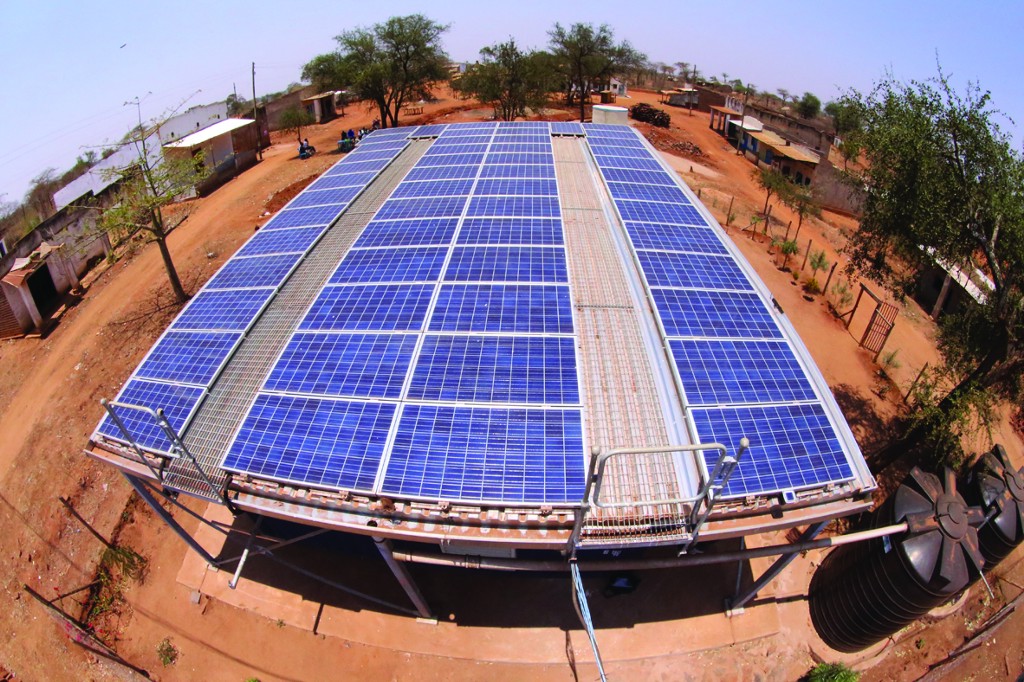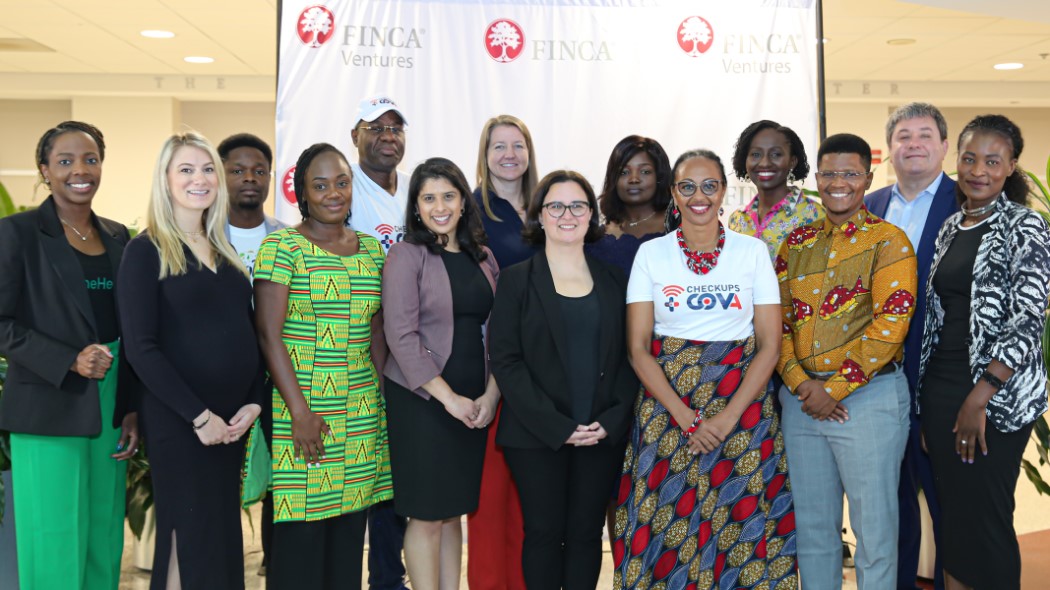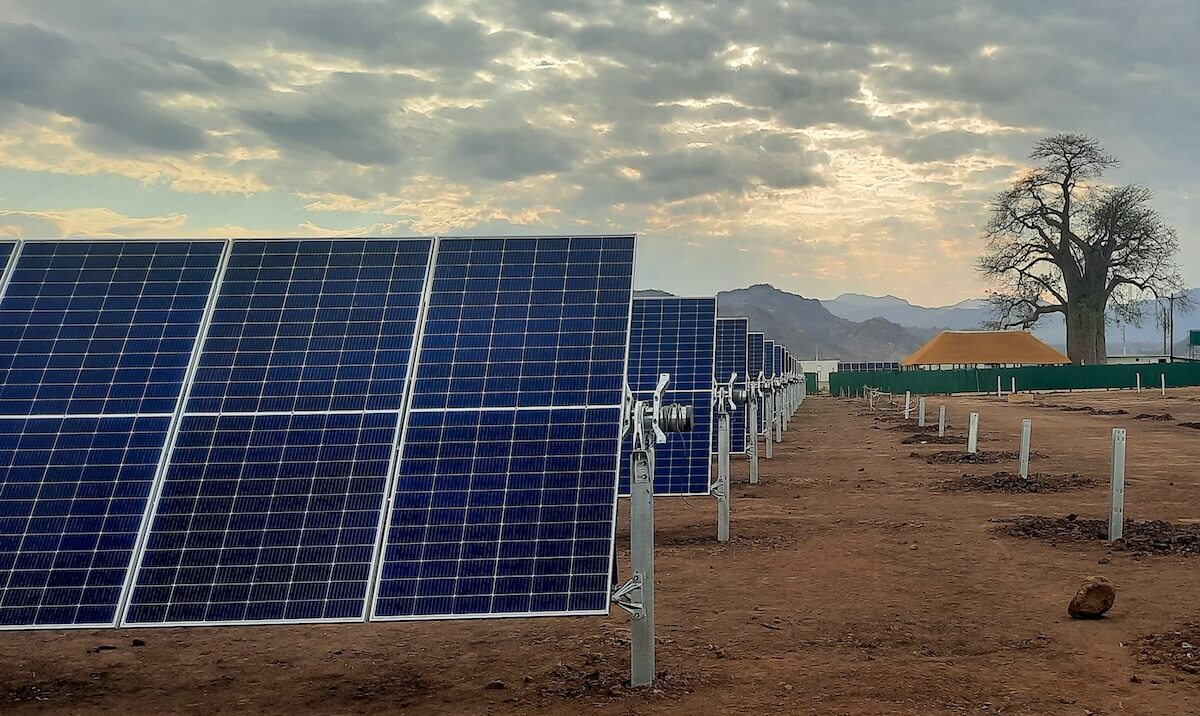Mini-grids, small community-based power plants and distribution systems, could provide more than 40% of the connections needed to deliver clean power to the world’s 1 billion people who still don’t have access to reliable electricity.
Yet mini-grids are still a mini-blip when it comes to achieving Sustainable Development Goal 7 (SDG7) — universal access to modern, clean, affordable and reliable energy by 2030. The mini-grid sector is still dealing in tens of mini-grids per year, not hundreds or thousands. And even that is a long way from the target of 10,000 minigrids in India by 2021, and the need for 100,000 in Africa by 2040.
Now, major utilities and energy equipment suppliers are entering the market and bankers are starting to mobilize the capital needed to finance the systems. Major European utilities like Engie, E.ON, Enel, EDF and multinationals such as Caterpillar and Mitsui are starting to ramp up their mini-grid investments as well, which should help to attract more commercial finance on the back of their strong balance sheets.
The Green Climate Fund invested $80 million to anchor Deutsche Bank’s Universal Green Energy Access Program (UGEAP), which hopes to mobilize $3.5 billion in debt finance over 15 years, some of which will go to building 10,500 solar mini-grids. And several other debt facilities are in discussion in India and elsewhere.
“The cost curve is going in the right direction. Innovation is happening, including integration with productive power,” said Alexia Kelly, CEO of Microgrid Investment Accelerator, a new financing facility launched earlier this year with the support of Microsoft and Facebook among others. “Microgrids have the ability to drive comprehensive self-generated economic development in communities.”

Fresh from a meeting of donors last month to coordinate support for mini-grids, Kelly says she is “incredibly bullish” about the mini-grid opportunity.
Market making
In the near term, access to affordable, long-term debt, which is critical to capital intensive infrastructure like mini-grids, remains a challenge. The market is still young and the relatively small size of many mini-grid projects makes them difficult to finance through traditional donor-funding mechanisms. In the 20 countries with the largest unelectrified populations, only 1% of all electricity investment in 2013–2014 went to decentralized solutions like mini-grids, according to new data.
“New investors are interested in mini-grids, but they look at companies and say ‘They are not ready for us’,” says Katrina Pielli, senior energy advisor for the U.S. Agency for International Development (USAID).
The Microgrid Investment Accelerator and others are working to aggregate projects to provide investors with pools of projects and plans to combine donor and impact investor capital to provide developers with more favorable investment terms.
In the early years, MIA will finance project pipelines of individual developers, as is happening in the solar home system market. Eventually, MIA will pool projects across developers and regions. MIA is aiming to provide developers with long-term, patient debt at appropriate interest rates.
MIA expects to play a central role as a “market making” syndication vehicle, where it deploys its capital in order to de-risk other private and public sources of finance. “ It’s a revolving vehicle that is a hybrid profit, non-profit, with concessionary loans to begin with, then moving into commercial lending as the economics improve,” Kelly says. “We are designed to take a subordinated position in the capital stack so that more senior lenders will feel comfortable investing in this new asset class,” said Kelly.
Market-making means more than capital, Kelly says, citing the importance of policy. India and Nigeria, which together account for two of every five of the world’s “electricity poor” people, are developing policies needed to scale mini-grids. Other challenges include poor data, lack of aggregation and standardization of project designs.
Promising signs
Some concessionary finance is available today and more is needed, but the access to commercial debt is the key to unlocking true scale. MIA is seeking equity and grant providers to close its first round by the end of the year. It plans to leverage $12.5 million in grant funding to mobilize $115 million with the goal of connecting more than 1.8 million people by 2023. Most of them will get power in the early years because MIA plans to push most of its capital out by 2023. The average project size is about 29 kW, with an average ticket size of $150,000.
Kelly says India is the lowest cost market, followed by East Africa and then Indonesia. MIA has a qualified pipeline from about 40 developers from those three regions. MIA has entered into MOUs with other potential co-financiers since its launch, including the Overseas Private Investment Corporation (OPIC), cKers Finance in India and CrossBoundary Energy in Africa. The organizations will explore opportunities for joint due diligence and co-financing strategies.
The mini-grid sector is generally thought to be three to five years behind the solar home system (SHS) market in terms of maturity. A recent debt facility for leading solar home company M-KOPA, including $55 million in local currency debt from Kenya’s Stanbic Bank, is a promising sign of what’s to come for mini-grids.
Banking on the Poor: Using the Off-Grid Solar Revolution to Unlock Low-Income Credit in Africa
A survey of developers shows demand for the debt capital MIA plans to provide. All of the developers surveyed were interested in a fixed-asset term loan at 8–12% interest rate for 7–15 years, said Peter Liu, MIA’s managing partner for finance. In addition, more than two-thirds of developers were interested in project equity and more than half were looking for corporate equity.
“By blending grant capital in with the equity we are able to bring in the private sector investors much earlier than they would otherwise be willing to come in given the risk profile of this very early market,” Liu added. “Given the margins in this segment right now, a purely commercial investment facility just doesn’t work. Grant capital is critical”.











